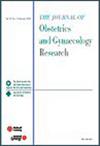Drug development for adenomyosis based on pathophysiology
Abstract
Purpose
Adenomyosis is a common uterine disease second only to uterine leiomyoma. Its management often requires medical treatment. However, practically no drug has ever been developed exclusively for adenomyosis. Development of non-hormonal drugs for adenomyosis so far has been unsuccessful. In this review, challenges in the development of non-hormonal drugs for adenomyosis are spelled out, an overview of current knowledge on the pathophysiology of adenomyosis is provided, and some promising avenues for drug development are outlined.
Methods
Published studies are reviewed and trials on adenomyosis registered at ClinicalTrials.gov are also reviewed.
Main Results
A survey of the interventional trials on new drugs gave a grim picture. Among seven trials on four classes of new drugs, a single trial on aromatase inhibitors reported symptom improvement but was marred by data authenticity concerns; the only trial on oxytocin receptor (OTR) antagonist was withdrawn, two trials on dopamine receptor D2 (DRD2) agonists yielded conflicting results, and the only trial on ulipristal acetate was completed but not reported and presumed to have failed. The only drug that is reported to be efficacious is mifepristone, an old drug that induces amenorrhea in 90% of patients.
On the bright side, a mouse model that apparently recapitulates one subtype of adenomyosis became available fairly recently. The big picture of the natural history of adenomyotic lesions has become clear, and the mechanisms underlying adenomyosis-induced heavy menstrual bleeding are being unveiled. Along these lines, several drugs have been tested in preclinical settings.
Conclusion
With a better understanding of adenomyosis pathophysiology, more druggable targets will be discovered.

 求助内容:
求助内容: 应助结果提醒方式:
应助结果提醒方式:


